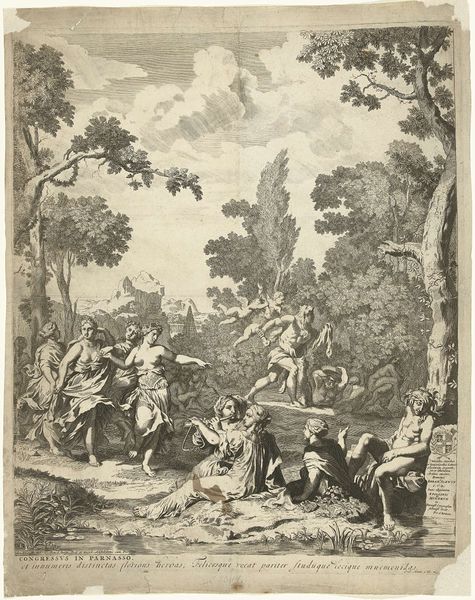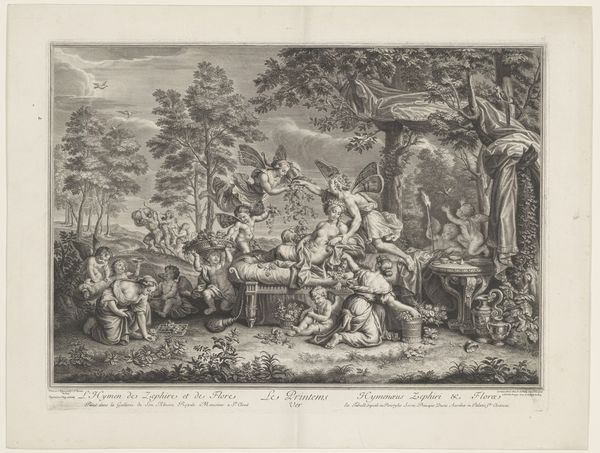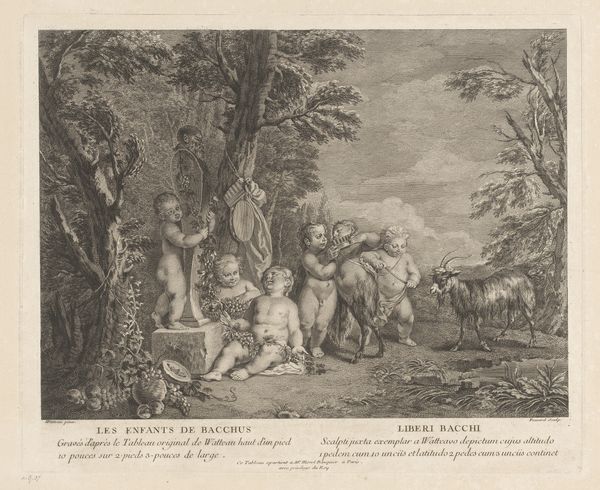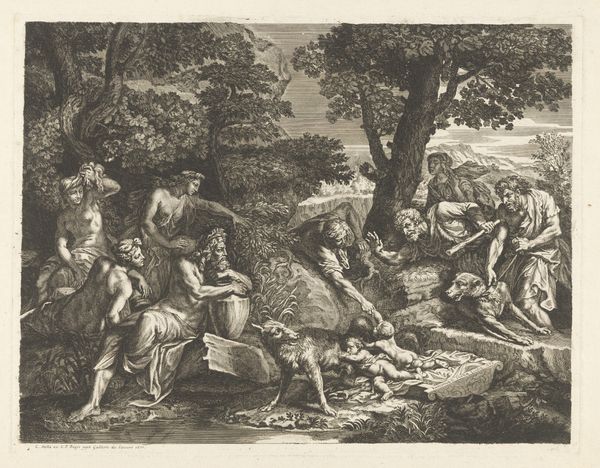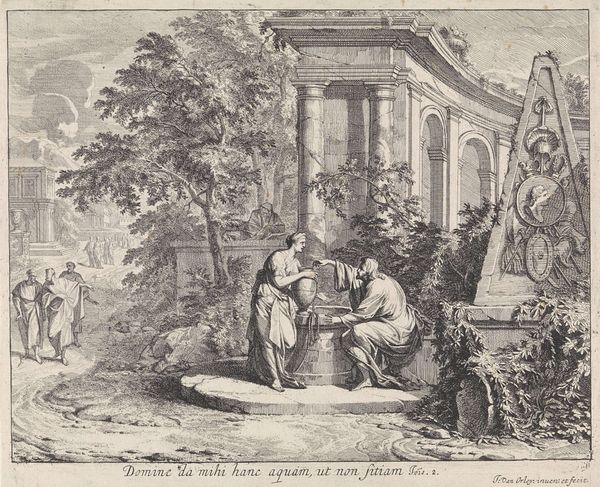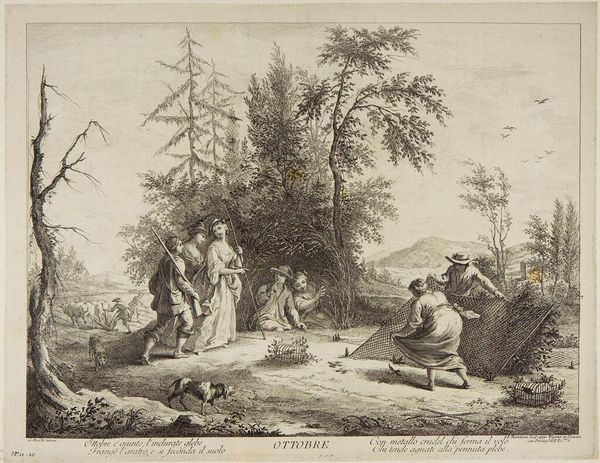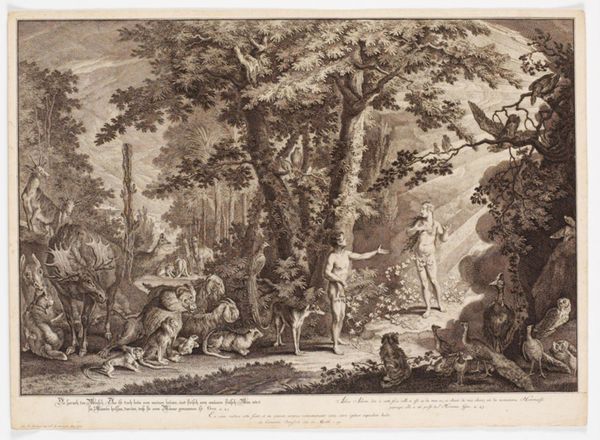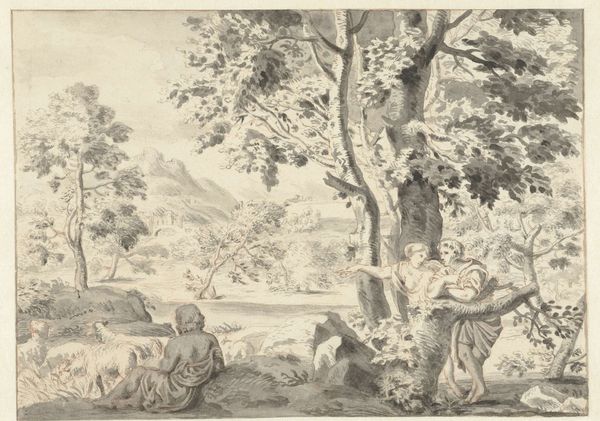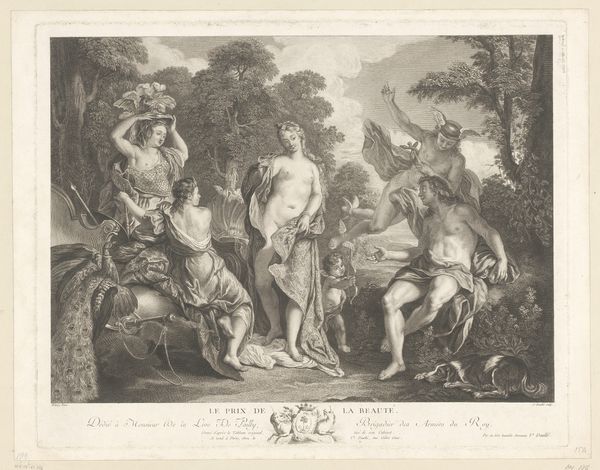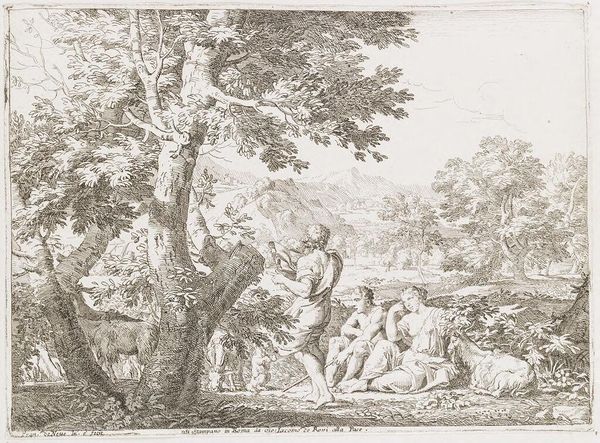
drawing, ink, pen
#
drawing
#
ink drawing
#
allegory
#
baroque
#
pen drawing
#
landscape
#
figuration
#
ink
#
pen
#
history-painting
Dimensions: height 420 mm, width 530 mm
Copyright: Rijks Museum: Open Domain
Johannes Glauber rendered this landscape with fountain, Diana and her nymphs sometime between 1646 and 1726. The composition orchestrates the interplay between nature and classical architectural elements, all in monochrome ink. The eye is led through careful arrangement of light and shadow, where meticulously rendered foliage contrasts with the smooth surfaces of the stone structures. Glauber uses line and perspective to create depth, positioning Diana and her nymphs within this constructed space, inviting us to reflect on the relationship between mythological narratives and the landscape. The structured composition evokes a sense of order and harmony, while the classical motifs suggest the influence of the renaissance on artistic production of the 17th and 18th centuries. Consider how the formal elements create a dialogue between reality and representation, nature and culture. This interplay encourages us to question how landscapes and the figures in them can be both idealized and imbued with symbolic meaning.
Comments
No comments
Be the first to comment and join the conversation on the ultimate creative platform.

